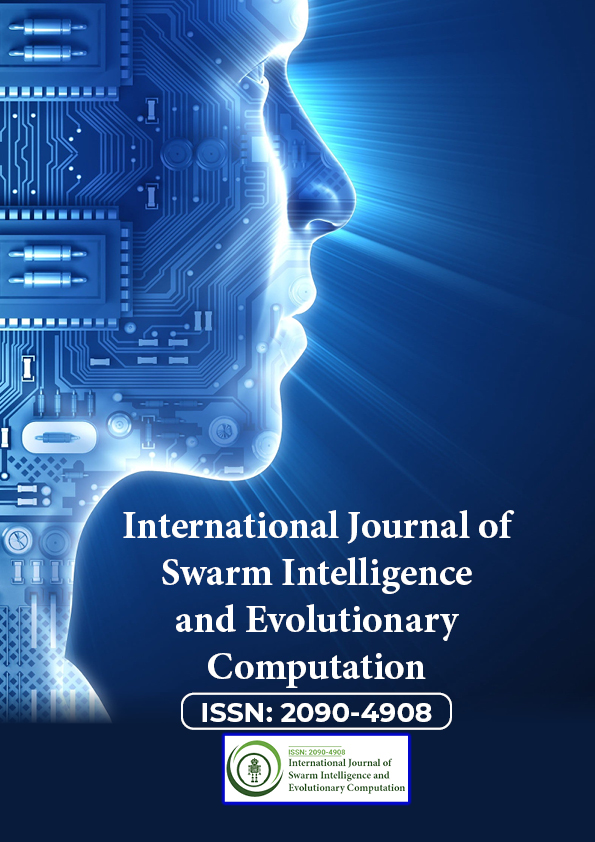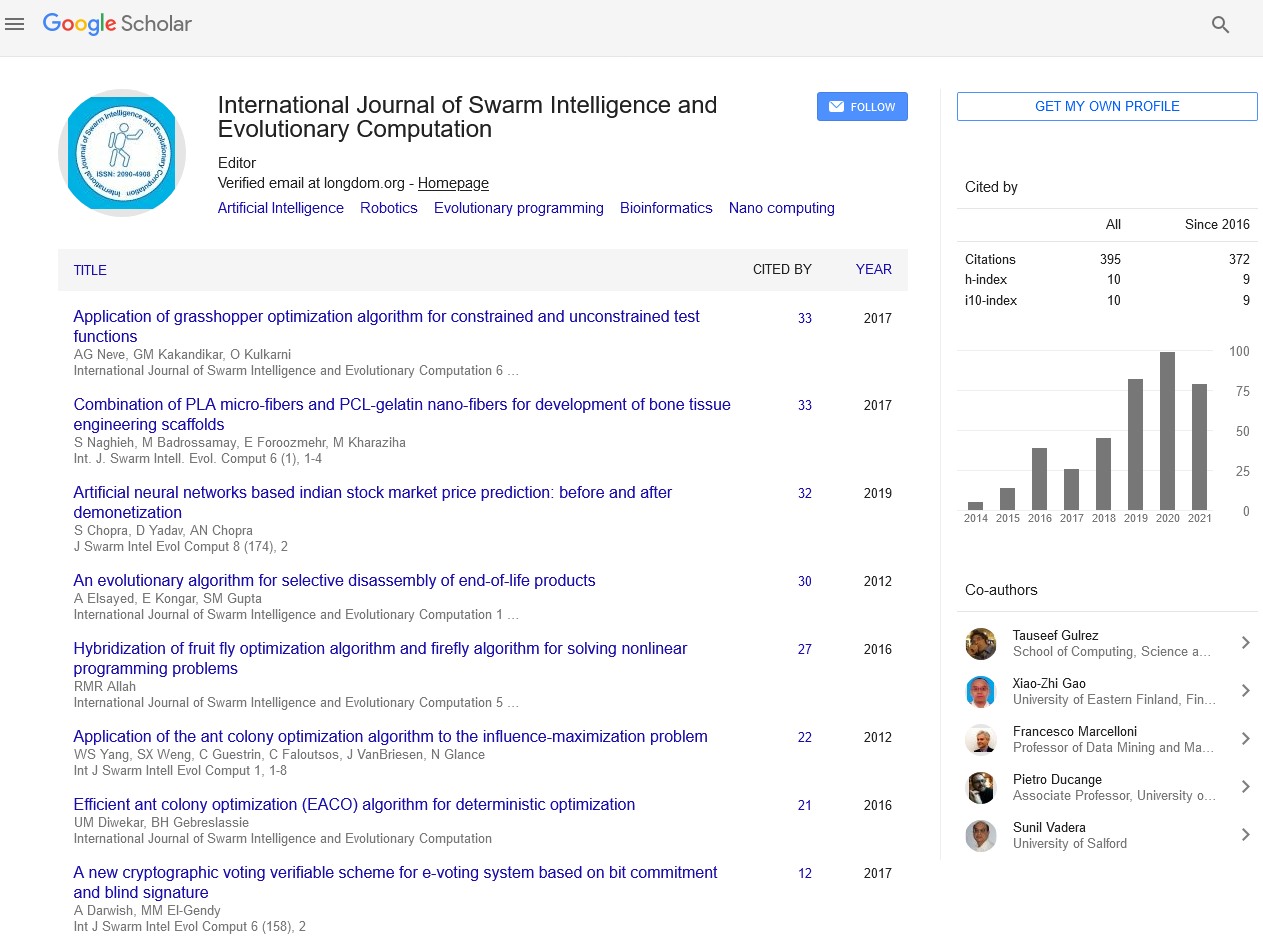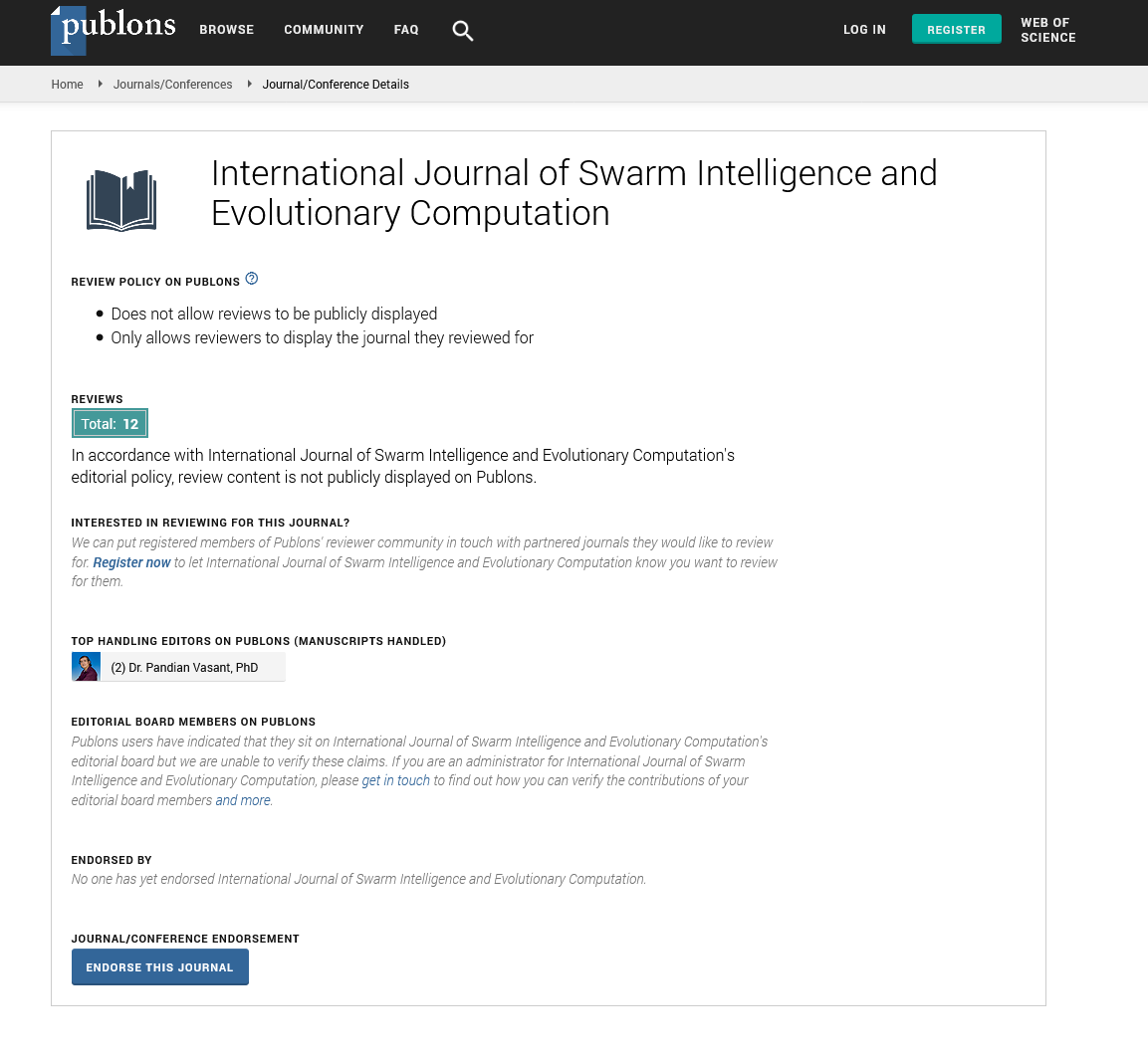Indexed In
- Genamics JournalSeek
- RefSeek
- Hamdard University
- EBSCO A-Z
- OCLC- WorldCat
- Publons
- Euro Pub
- Google Scholar
Useful Links
Share This Page
Journal Flyer

Open Access Journals
- Agri and Aquaculture
- Biochemistry
- Bioinformatics & Systems Biology
- Business & Management
- Chemistry
- Clinical Sciences
- Engineering
- Food & Nutrition
- General Science
- Genetics & Molecular Biology
- Immunology & Microbiology
- Medical Sciences
- Neuroscience & Psychology
- Nursing & Health Care
- Pharmaceutical Sciences
Opinion Article - (2025) Volume 14, Issue 2
The Distributed Cognition View: Swarm Intelligence as a Model for Decentralized AI
Racheal Dssouli*Received: 18-Apr-2025, Manuscript No. SIEC-25-28702; Editor assigned: 21-Apr-2025, Pre QC No. SIEC-25-28702 (PQ); Reviewed: 05-May-2025, QC No. SIEC-25-28702; Revised: 12-May-2025, Manuscript No. SIEC-25-28702 (R); Published: 19-May-2025, DOI: 10.35248/2090-4908.24.14.419
Description
Swarm Intelligence offers a compelling model for designing Artificial Intelligence systems that move beyond the limitations of centralized control and embrace the power of decentralized computation. Traditional AI often relies on a central processing unit that coordinates all actions and makes all decisions. This approach, while effective for some tasks, can lead to bottlenecks, single points of failure, and difficulties in scaling to large and complex problems. In a centralized system, the failure of the central unit can bring the entire system down. Moreover, as the complexity of the problem increases, the central unit may become overwhelmed, leading to decreased performance and efficiency.
Swarm Intelligence, in contrast, is inherently distributed, with each agent operating autonomously and interacting only with its local neighbors. There is no central repository of knowledge or a single entity responsible for making all decisions. Instead, global patterns and solutions emerge from these local interactions, without any central authority or global plan. Agents communicate and coordinate their actions through simple rules and mechanisms, such as pheromone trails in ant colonies or local velocity adjustments in bird flocks. This decentralized approach offers several key advantages for AI.
First, it provides robustness. Because there is no single point of failure, the system can continue to function even if some agents fail. The failure of a few agents does not disrupt the overall behavior of the system, which can adapt and reorganize itself to compensate for the loss. Second, it offers scalability. Adding more agents to the system does not necessarily increase the complexity of the control mechanism, making it easier to scale the system to handle larger problems. The computational load is distributed across the agents, allowing the system to handle increasing amounts of data and complexity without significant performance degradation. Third, it provides adaptability. The system can adapt to changing conditions by adjusting the local interaction rules, without requiring a complete redesign of the central control mechanism. Agents can respond to changes in their local environment and adjust their behavior accordingly, leading to emergent global adaptation.
The distributed cognition perspective highlights the importance of understanding how intelligence can arise from the interactions of simple agents in a decentralized system. This perspective suggests that AI systems do not need to be complex and monolithic to be intelligent. Instead, they can be composed of many simple agents that collectively exhibit complex and adaptive behavior. This approach is particularly relevant in situations where the environment is dynamic, uncertain, or unpredictable, and where a centralized system would be too fragile or inflexible to respond effectively.
In conclusion, Swarm Intelligence, viewed through the lens of distributed cognition, provides a valuable framework for designing decentralized AI systems that are robust, scalable, and adaptable. This perspective challenges the traditional centralized approach to AI and offers a new vision of intelligence as an emergent property of distributed interactions. By embracing the principles of distributed cognition, we can create AI systems that are better equipped to handle the challenges of complex, real-world environments.
Citation: Dssouli R (2025). The Distributed Cognition View: Swarm Intelligence as a Model for Decentralized AI. Int J Swarm Evol Comput. 14:419.
Copyright: © 2025 Dssouli R. This is an open-access article distributed under the terms of the Creative Commons Attribution License, which permits unrestricted use, distribution and reproduction in any medium, provided the original author and source are credited


